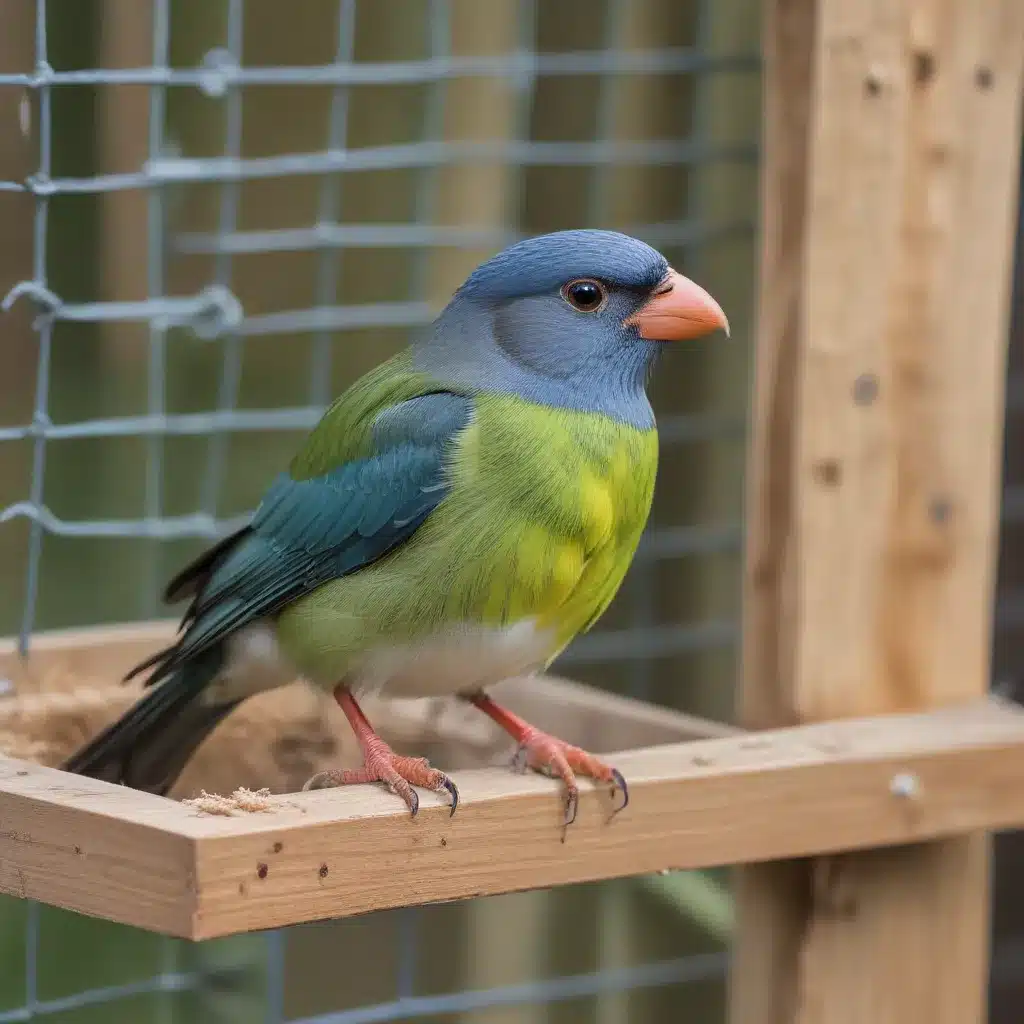
Avian Habitats and Ecosystems
As an experienced avian caretaker, I’ve had the privilege of working with a diverse array of bird species, each uniquely adapted to their native habitats and ecosystems. From the vibrant plumage of tropical parrots to the graceful soaring of raptors, the avian world is a true marvel of nature.
Native Bird Populations
Across the globe, birds play vital roles in maintaining the delicate balance of their environments. In the lush wetlands of Florida, the purple gallinule is a striking example of a native species that thrives in the region’s marshes and swamps, foraging on aquatic vegetation and insects. Similarly, the Brown Pelican, a majestic seabird found along the coasts of the Gulf of Mexico and the Atlantic, serves as an important indicator of the health of our marine ecosystems.
Threats to Avian Habitats
Sadly, many of these native bird populations face a myriad of threats to their survival. Habitat loss due to urbanization, agricultural expansion, and climate change can disrupt the delicate web of life that sustains these incredible creatures. Pollution, human-wildlife conflicts, and the illegal wildlife trade also pose significant dangers to birds, both migratory and resident.
Conservation Efforts
In response to these challenges, organizations like Mika Birds Farm have dedicated themselves to the conservation and protection of avian species. Through community engagement, habitat restoration, and public education, these efforts aim to safeguard the future of our feathered friends and the ecosystems they call home.
Avian Rehabilitation and Rescue
When birds are faced with illness, injury, or displacement, the critical role of avian rehabilitation and rescue centers becomes paramount. These specialized facilities, staffed by experienced professionals and passionate volunteers, provide a vital lifeline for our feathered neighbors.
Rescue and Rehabilitation Protocols
The process of avian rescue and rehabilitation is a delicate and multifaceted endeavor. When a distressed bird is reported, trained responders spring into action, carefully capturing the animal and assessing its condition. From there, the bird is transported to a licensed rehabilitation facility, where a comprehensive medical evaluation and treatment plan is established.
Bird Care and Housing
Providing appropriate housing and care is essential for the bird’s recovery. Specialized enclosures, equipped with perches, nesting materials, and enrichment items, create a safe and nurturing environment. Skilled caretakers monitor the bird’s progress, administering medication, offering a specialized diet, and ensuring the bird’s physical and psychological well-being.
Release and Monitoring
The ultimate goal of avian rehabilitation is to return the bird to its natural habitat, fully recovered and able to thrive. Once the bird has regained its strength and is deemed fit for release, it is carefully transported to a suitable location and carefully monitored to ensure a successful reintegration into the wild.
Avian Sanctuaries and Shelters
In addition to rehabilitation centers, avian sanctuaries and shelters play a vital role in providing long-term care and protection for birds that cannot be released back into the wild.
Sanctuary Facilities and Resources
These specialized facilities offer a safe haven for birds that have suffered permanent injuries or are unable to survive independently in the wild. Equipped with spacious enclosures, specialized veterinary care, and enrichment opportunities, these sanctuaries strive to provide the highest quality of life for their avian residents.
Volunteer and Community Engagement
Avian sanctuaries often rely on the dedication and support of volunteers to assist with daily operations, from feeding and cleaning to educational outreach. By engaging the local community, these sanctuaries foster a deeper appreciation for the avian world and inspire individuals to become active stewards of our feathered friends.
Funding and Sustainability
Maintaining the operations of an avian sanctuary or shelter requires a significant financial investment. Through donations, grants, and fundraising initiatives, these organizations work tirelessly to secure the resources necessary to provide exceptional care and ensure the long-term sustainability of their vital work.
Avian Species and Characteristics
The diverse world of birds is a tapestry of unique species, each with its own fascinating characteristics and adaptations.
Common Rescued Bird Species
Among the most commonly rescued bird species are parrots, raptors, waterfowl, and songbirds. Parrots, such as the vibrant macaws and cockatoos, are often victims of the illegal pet trade, requiring specialized care and rehabilitation. Raptors, including hawks, owls, and eagles, may suffer from accidental collisions or exposure to environmental toxins. Waterfowl, like the beloved Brown Pelican, can be impacted by oil spills or other maritime disasters, while songbirds may fall victim to window strikes or domestic cat predation.
Avian Anatomy and Behavior
Understanding the intricate anatomy and complex behaviors of birds is crucial for their effective rehabilitation and long-term care. From the specialized respiratory systems that allow birds to soar to the complex social structures and communication methods, each species presents unique challenges and requires tailored approaches to their well-being.
Dietary and Veterinary Needs
Providing appropriate nutrition and specialized veterinary care is essential for the recovery and long-term health of rescued birds. Skilled avian caretakers work closely with veterinarians to develop customized feeding regimens and administer necessary medications and treatments, ensuring the birds’ physical and mental well-being.
The dedicated efforts of avian rescue, rehabilitation, and sanctuary organizations are a testament to the compassion and resilience of the human spirit. By working tirelessly to protect and restore the avian populations that enrich our world, we not only safeguard the delicate balance of our ecosystems but also forge a deeper connection with the remarkable creatures that grace our skies. Through continued education, advocacy, and collaborative efforts, we can ensure a future where our feathered friends thrive and inspire generations to come.


